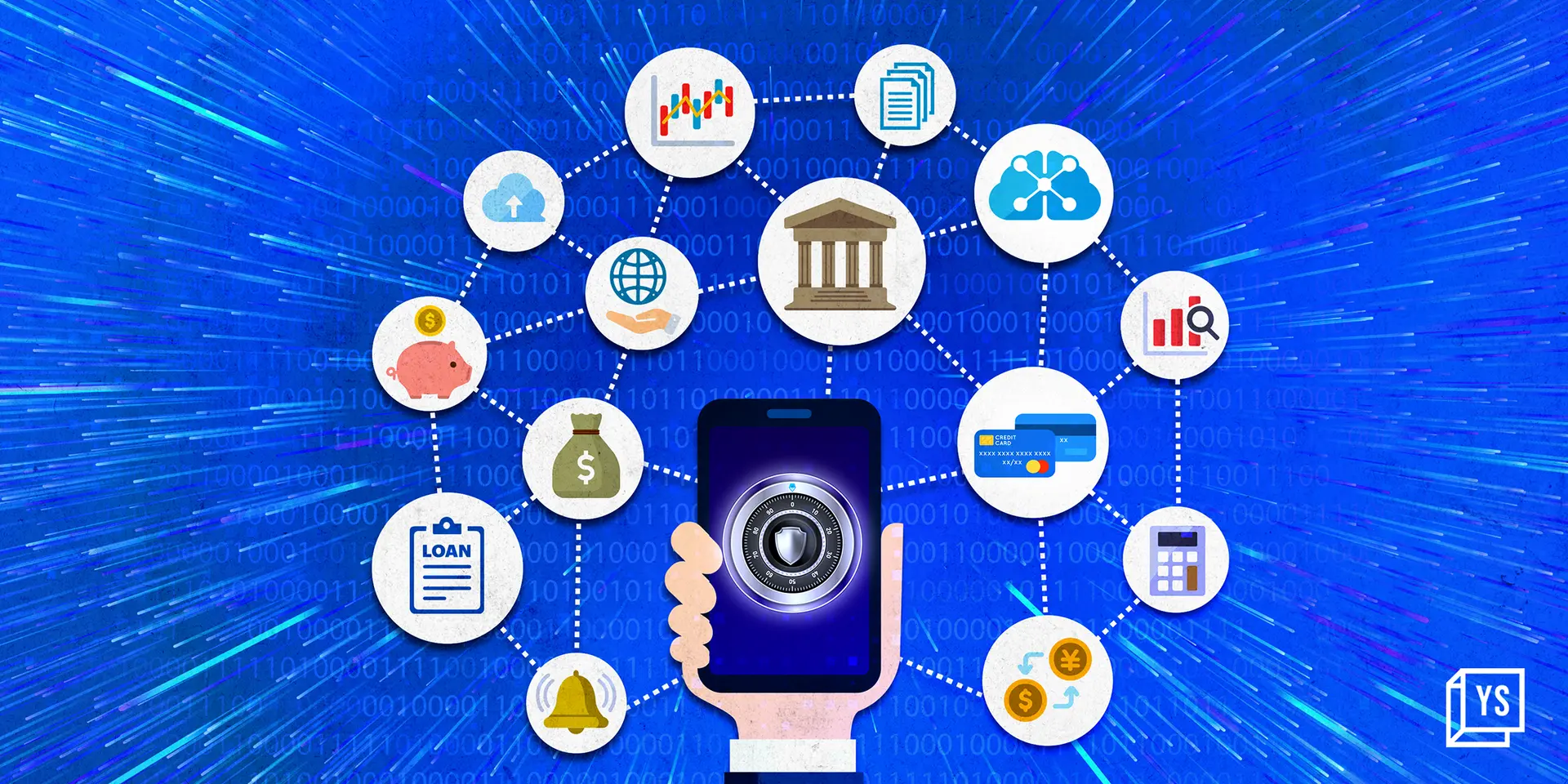Account Aggregation 101: All you need to know
RBI introduced the Account Aggregator framework last September to simplify the loan process for consumers. Here’s all you need to know about the opportunities AA presents for companies, why it’s useful for consumers, and how to set it up.
One big takeaway from last month’s Global Fintech Fest held in Mumbai was Finance Minister Nirmala Sitharaman emphasising the huge opportunity Account Aggregation presents for Indian and global fintech companies.
In her inaugural address, she added that with 1.1 billion accounts and 52 RBI registered entities such as banks and non-banking financial institutions on the AA network already in less than a year, a strong proposition for creative innovation and solutions exists.
AA was the talk of the town at the GFF, with stakeholders across the board—from government officials and startup founders to banks and global investors—opining on what it could mean for the financial ecosystem.
The verdict was unanimous: the Account Aggregator system has the potential to emerge as the next big government-led financial innovation from India, following in the footsteps of UPI and RuPay.
For the average person, banking in India has been overhauled in recent years, with net banking and UPI bringing more people into the formal financial system.
But the lending end of the spectrum has vastly remained the same over the last 100 years.
Up until now, that is.

RBI’s Account Aggregator framework aims to simplify the lending and borrowing process. And just as UPI sloughed off redundancies in the digital payments process, Account Aggregation seeks to reduce the number of steps required for borrowers to avail of a loan.
Eventually, RBI envisions AA to be also used by portfolio management services and investment companies to evaluate a user’s financial profile and suggest investment strategies.
As the regulator builds in more operational structures, the AA ecosystem aspires to be a report card of a person’s financial health, where people can see their savings, investments, loans, credit and tax history, pensions data, insurance details, and spending trends—all on a single, secure dashboard.
So far, apart from banks, fintech startups including , , and have received in-principle approvals to launch AA platforms.
AA is expected to boost lending for loan and wealth management platforms by making the process of documentation multiple times easier.
Here’s all you need to know.
What is an Account Aggregator?
Think of an ‘Account Aggregator’ as a one-stop platform containing all the documents you need to apply for a loan—bank and salary statements, past loans, how you repaid them, and a history of your investments and assets.
All of the information on this dashboard comes directly from the financial institutions you’ve transacted with—such as your bank, insurer, mutual fund company, and your credit card issuer.

(Photo credit: AFP)
FM Nirmala Sitharaman urges Indian fintechs to innovate in sustainable finance
Why is it a big deal?
Loans, traditionally, have required extensive paperwork. Every time you apply for a loan, you have to submit the same documents all over again: salary receipts, income statements, expenses, investments, assets, and anything else that can convince a bank or a lender that you’re a good borrower.
As a counter to the onerous process and slow disbursals, digital lending platforms offering “loans in seconds/minutes with minimum paperwork” have sprouted in recent years. While some are legitimate, several are scam companies that use brute force to recover the money—which is against RBI’s norms.
So, either the borrowing pool is restricted because of the multiple checks and processes in the formal system, or borrowers who are desperate for loans risk sometimes approaching predatory and usurious digital lenders.
With AA, RBI wants to quell these scam platforms by making it easier for people to apply to legitimate financial institutions for loans.
The Central bank recently released the first set of guidelines for digital lenders that laid out what is acceptable and what isn’t when it comes to online loans. It said that customers will need to be told how their data will be used, for how long, and the recovery process they’ll be using.
AA will also help new-to-credit customers become creditworthy because, instead of looking at just salary and savings statements, lenders will be able to analyse a plethora of data points, including assets held by the borrower, their transactions, and repayment history to make lending decisions.
Companies that offer AA services have to adhere to RBI’s strict stipulations on data privacy and protection too, which makes the process of sharing financial information safer.
To recap, AA is a big deal because:
- It will democratise lending; more people will be able to access loans safely from formal, regulated financial institutions.
- The simple user experience it will offer will lead to greater adoption + network effects when it comes to lending.
- Total target addressable marketing for lending will increase.
- Will make the process of applying for and getting a loan faster.
- The unorganised sector, which does not have recurring salary receipts to show but does use digital payments and banking will have better chances of getting loan approval.

How does it work?
You sign up with any RBI-licensed Account Aggregator—usually non-bank financial services institutions—and create your profile using a mobile number.
You can then link all or some of your bank accounts to your profile. If you have savings accounts with SBI, Axis Bank, and HDFC Bank, and a salary account with ICICI Bank, you can choose to link any or all the bank accounts to your AA profile.
Next, decide what documents and accounts you want to disclose to the lender.
After linking all the accounts to one profile, a unique ID will be generated—much like the UPI ID we use these days. For example, “YourStoryEg@AA”.
Now, when you apply for a loan, all you will have to provide for documentation is your unique AA ID.
The lender will then send a request to the platform to access your documents for your approval. No information will be shared without your consent.
You will also be able to see exactly what information a lender is requesting, how it will be used, and the duration of the lender’s access to your information.
If you do not agree with any part of the request, you can reject it.
AA service providers cannot see the data being shared with the financial information users—they merely transport it from one financial institution to another based on a user’s consent and direction.
Essentially, the AA flow would be something like this:
Step 1 — Sign up on an AA platform with your mobile number
Step 2 — Link bank and other financial services accounts to your profile
Step 3 — Share your unique ID with a lender when you apply for a loan
Step 4 — Review the access request by the lender
Step 5 — Enter the PIN to approve access
Terms associated with AA
There are three basic components in the AA equation:
- Financial information providers: Institutions that provide lenders the documents they need to consider loans. These include banks/NBFCs, mutual fund houses, insurance providers, and invoice/tax platforms.
- Account Aggregators: The platform that collates and stores the documents provided by the FIPs in an “electronic consent artefact”—like a locker that lenders can only gain access to if the borrower consents.
- Financial information users: Lenders such as NBFCs, credit card companies, banks, digital loan platforms, etc.
Singapore, UAE expressed interest in accepting RuPay: FM Nirmala Sitharaman
What this means for fintechs, other companies
AA is a game-changer for fintech companies because it will directly lead to an increase in loans.
In the loan application process, dropouts happen mostly at the documentation stage, loan platforms have said, and it’s primarily because of two reasons:
- The paperwork is too extensive, tedious, and time-consuming.
- People don’t trust the loan platform when it comes to data privacy and security.
With AA, all of that goes away because, first and most importantly, the process becomes convenient and easy; and, secondly, consumers can rest assured that their data will be safe throughout the process.
Because AA will make it easier to get loans, fintech platforms in the personal finance space will thrive.
For non-loan fintech platforms, AA is a good value proposition too.
AA hopes to become something of a record book of a customer’s financial activity, including expenditures and investments.
Most of us have multiple bank accounts for different purposes: one for savings, one for investments, and one on a neobanking platform, for example. To understand your financial health, you have to manually track your financial activity. With AA, you can see all of this on a single, nifty platform.
Fintech companies can build on top of this layer, using financial data points to service customers.
For example, a wealth manager can quickly look at a person’s overall financial health and recommend strategies to maximise returns.
AA companies, which are basically NBFCs that have the AA licence from the RBI, will be able to monetise this data by offering their own financial services and products, as well as earn revenue from the entity they’re providing information to.
Eight fintech companies, to date, have received in-principle approvals from RBI to launch their account aggregation platforms, including PhonePe, Pine Labs’ unit, Setu, and Tally.
CAMSfinserv, Perfios, Finvu, Yodlee Finsoft, NESL Asset Data, among others, have also received RBI’s nod to operate as AAs. Most of them, if not all, are in various stages of launching their platforms, or have done so already.
In all, per media reports, about 90 organisations have applied to become part of the AA ecosystem, including , Paisabazaar, Jio Payments Bank, and .
All major public sector banks, too, have signed up and gone live. Private lenders including HDFC Bank, ICICI Bank, Axis Bank, IndusInd, and Kotak Mahindra are live on the AA system too.
A potential game-changer
At the heart of it, the AA framework seeks to make it much easier and more secure for consumers to get loans, as well as make better investment decisions.
Setting up an account is a one-time deal, but the benefits it unlocks are enormous. Digital loans, loans from financial institutions, and accessing portfolio management services become a one-step process with AA.
The added layer of secure data sharing between various components of the loan underwriting ecosystem is a much-needed bonus.
Edited by Feroze Jamal and Saheli Sen Gupta







